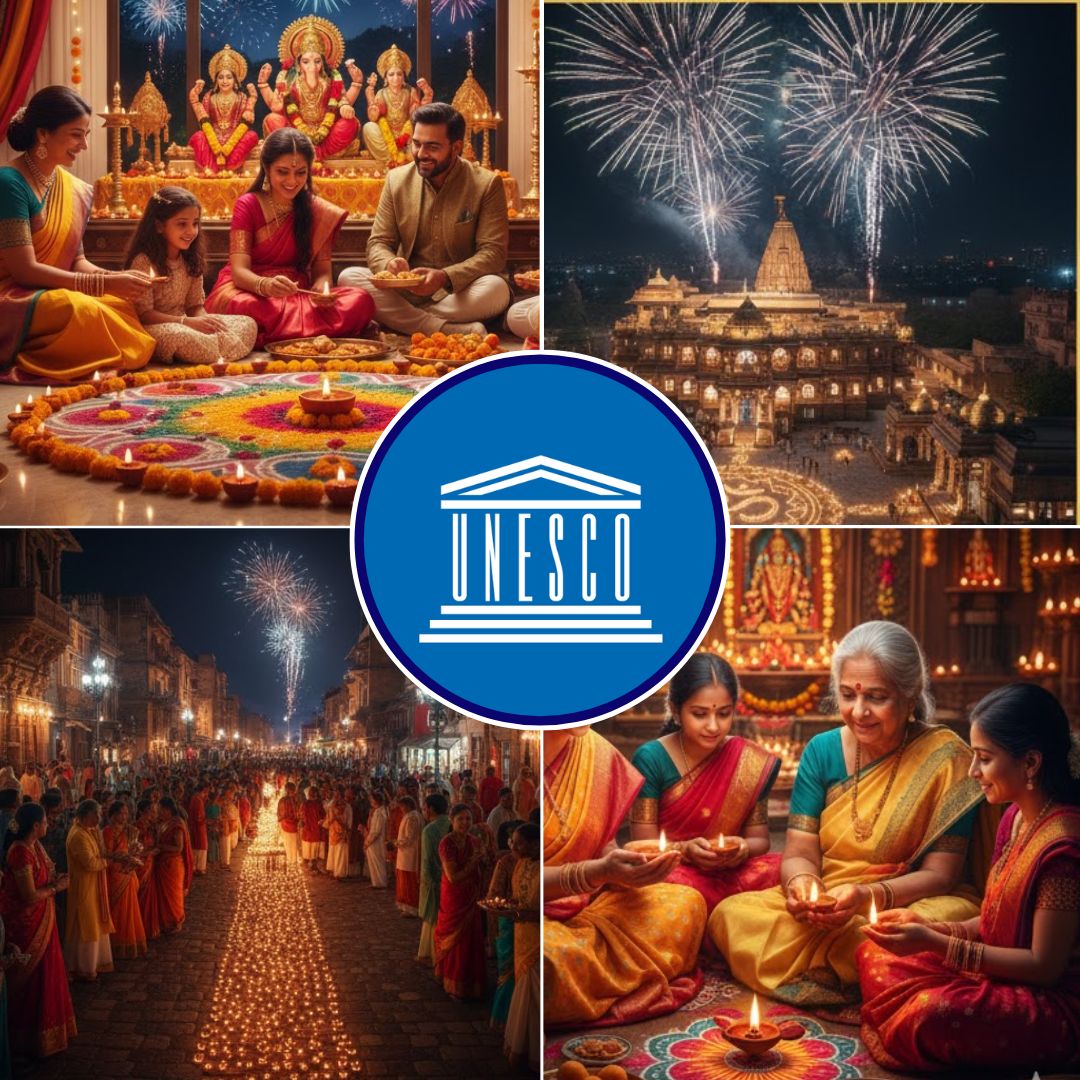UNESCO’s Intergovernmental Committee for the Safeguarding of the Intangible Cultural Heritage inscribed Deepavali on its Representative List of the Intangible Cultural Heritage of Humanity on December 10, 2025, during the 20th session held at New Delhi’s Red Fort.
This prestigious recognition, the 16th for India, celebrates Deepavali as a vibrant festival symbolising light over darkness and good over evil, with Prime Minister Narendra Modi hailing it as “the soul of our civilisation” that embodies universal values of illumination and righteousness.
Culture Minister Gajendra Singh Shekhawat described it as an “emotional honour and responsibility,” while UNESCO officials noted its role in strengthening social bonds, supporting artisans, and advancing sustainable goals like gender equality; the event drew delegates from 194 member states amid widespread national joy.
Deepavali’s Rituals Embrace Global Spotlight
Deepavali, often called the Festival of Lights, unfolds over five days with rituals that blend spirituality, community, and artistry, now etched into global heritage records. Families clean homes, light clay diyas (lamps), create rangoli patterns with coloured powders, and share sweets like laddoos and barfis, fostering bonds across castes and communities in a display of unity.
Artisans, particularly women potters, craft eco-friendly lamps from natural clay, while traditional practices promote sustainable living such as using biodegradable materials that align with modern environmental concerns. P
M Modi, posting on X (formerly Twitter), captured the national pulse: “People in India and around the world are thrilled, the addition of Deepavali to the UNESCO Intangible Heritage List will contribute to the festival’s global popularity even further,” underscoring its timeless appeal.
Culture Minister Shekhawat added depth, stating, “Deepavali is not just celebrated but it is felt, lived and absorbed across the generations,” and praised the Indian diaspora for carrying its message of harmony to over 200 countries. This inscription humanises the festival, spotlighting stories of weavers in Varanasi producing silk sarees or sweet-makers in Mathura perfecting pedas, whose crafts sustain livelihoods and cultural continuity.
People in India and around the world are thrilled.
— Narendra Modi (@narendramodi) December 10, 2025
For us, Deepavali is very closely linked to our culture and ethos. It is the soul of our civilisation. It personifies illumination and righteousness. The addition of Deepavali to the UNESCO Intangible Heritage List will… https://t.co/JxKEDsv8fT
Journey from Tradition to UNESCO Honour
India’s successful nomination stemmed from years of advocacy by the Ministry of Culture, Sangeet Natak Akademi, and grassroots groups, culminating in hosting the December 8-13 session with over 400 delegates. The Red Fort, a symbol of India’s independence, served as the venue, blending historical gravitas with contemporary diplomacy as the resolution passed unanimously.
This builds on milestones like Kumbh Mela’s 2017 listing and Durga Puja in 2021, reflecting a strategic push to safeguard 15 prior elements including Yoga and Garba. Preceding efforts included community consultations and documentation of Deepavali’s variations from South India’s Lakshmi Puja to North India’s Ramayana-inspired celebrations ensuring the submission captured its multifaceted essence.
Post-announcement, festivities amplified: Nepal hosted a bhajan evening with lamp-lighting at Pashupati Temple, while diaspora events lit up London, New York, and Sydney, amplifying the news virally.
UNESCO’s Tim Kuria emphasised during proceedings how such inscriptions “encourage communities to safeguard their heritage while promoting intercultural dialogue,” positioning Deepavali as a beacon for global cultural exchange.
Challenges like urbanisation threatening artisan skills were acknowledged, with the listing mandating preservation plans to protect these living traditions.
Cultural Threads Weave Broader Impact
Deepavali’s heritage status extends beyond rituals, influencing economics, gender dynamics, and social cohesion in profound ways. The festival generates billions in economic activity through fireworks, apparel, and confectionery, supporting millions of small-scale producers, yet it also spotlights sustainability drives like terracotta diyas over plastic.
Women play central roles from drawing kolams in Tamil Nadu to leading aarti prayers aligning with UNESCO’s Sustainable Development Goals on gender equality and decent work.
Historical roots trace to ancient texts like the Ramayana, where Lord Rama’s return to Ayodhya sparked lamp-lighting, evolving into a pan-Indian phenomenon embraced by Jains (honouring Mahavira), Sikhs (Bandi Chhor Divas), and even non-Hindus through shared feasts.
Globally, it counters stereotypes by showcasing multiculturalism: in Fiji, Indo-Fijians blend it with local customs, while in Trinidad, it features steelpan music alongside dhol drums.
Critics occasionally note environmental concerns from fireworks, but recent shifts towards green crackers and community clean-ups demonstrate adaptive resilience.
This recognition arrives timely, amid rising cultural nationalism and international calls for heritage protection post-COVID, reinforcing India’s soft power on the world stage.
The Logical Indian’s Perspective
Deepavali’s UNESCO inscription triumphs as a vivid testament to cultural empathy, where lamps of kindness pierce divisions, inviting every soul to partake in harmony’s glow. It embodies our ethos of peace and coexistence, transforming a festival into a global dialogue that nurtures dialogue over discord, crafts over consumerism, and unity over uniformity urging societies to weave diverse threads into a tapestry of shared progress. By elevating such traditions, we champion positive change, reminding leaders and citizens alike that true illumination stems from mutual respect amid diversity’s rich mosaic.












